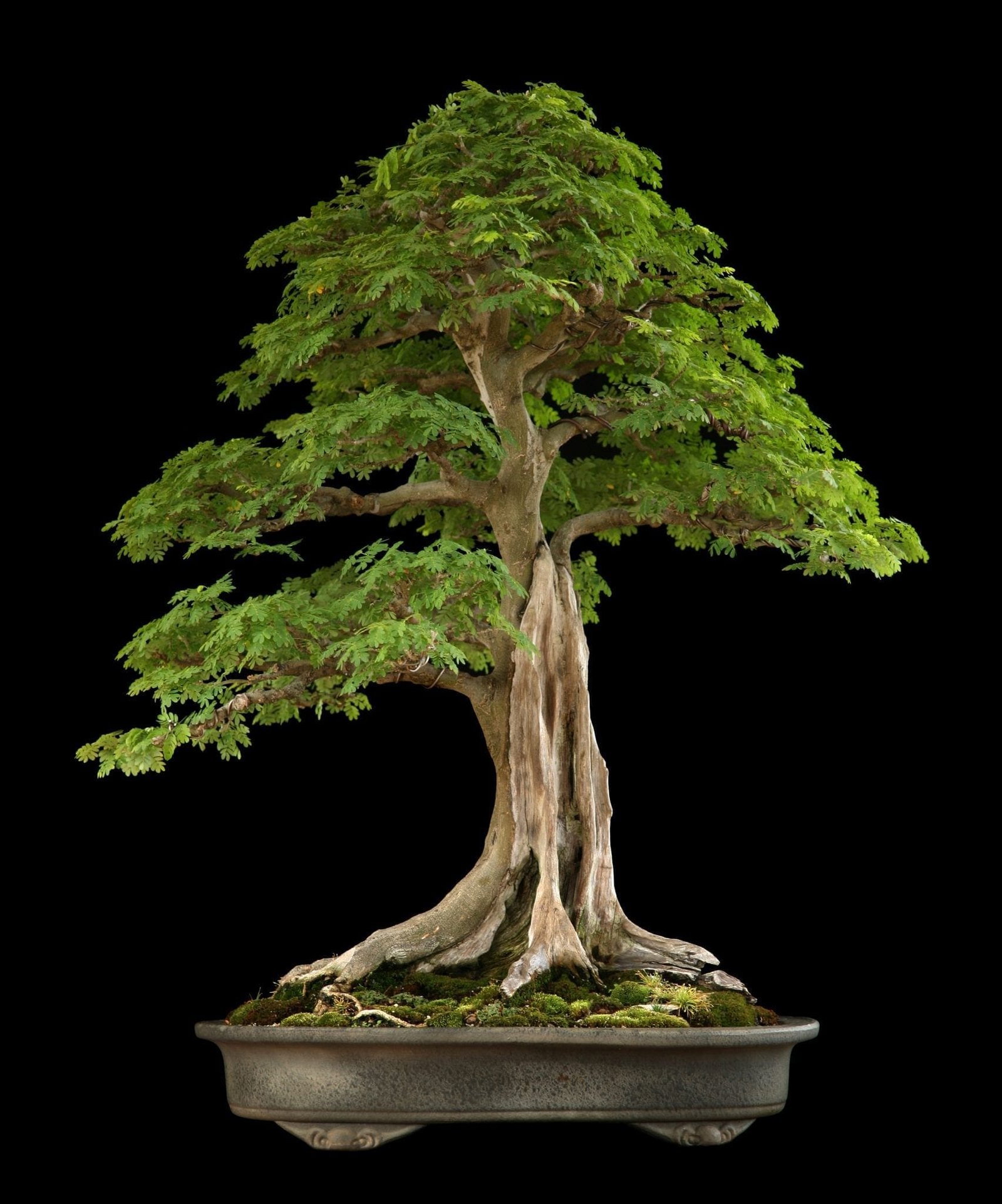Master the Art of Bonsai Trees: Your Ultimate Guide to Growing Beauty and Balance

Step outside on a dew-soaked morning, mug warming your palms, and face a tree that’s been sculpted by decades—not by wind or rain, but by patient hands. That’s the quiet magic of bonsai. It isn’t simply about making tiny trees; it’s about learning to see time as a friend, not an enemy, and discovering your own resilience mirrored in bark and leaf.

This is not just another “how-to” guide. Drawing from my years in the greenhouse trenches—killings, triumphs, disasters barely averted—and hundreds of conversations with growers from Kyoto to Kansas City, this resource delivers what I wish I’d known at the start: clear strategy, grounded wisdom, and the subtle nuances that separate thriving artistry from potted frustration.
The Bonsai Tree: Living History at Your Fingertips
The Real Roots: Why Bonsai Exists
Most sources tell you bonsai means “tree in a tray.” Technically true—but spiritually incomplete. When I first visited Omiya Bonsai Village in Saitama back in 2019, what struck me wasn’t the shape of the trees but their presence. Each one seemed to carry a story—a typhoon survived here; a child’s first cut there.
Bonsai was never about size—it was always about essence.
- In China (as early as 200 CE), penjing artists crafted living landscapes as meditative practice.
- Japanese monks refined techniques over centuries for clarity and restraint.
- Today: Every culture adds its voice. Americans experiment with redwoods; Europeans adapt olives.
When you wire or prune your first tree, you’re joining an unbroken tradition of observation, patience, and humility before nature.
Bonsai Basics: What Most Beginners Miss
Let’s cut through the noise:
Picking Your Species (The Fit Matters More Than You Think)
Newcomers often buy whatever looks cool online—then watch it wilt.
Here’s how seasoned growers decide:
- Climate Compatibility: Don’t fight your weather! I once lost a prized Chinese elm when winter cold seeped through my supposedly insulated windows.
- Growth Rate: Fast-growers (like Ficus retusa) forgive mistakes; slow-growers (Black Pine) demand precision.
- Indoor vs Outdoor: Some species need dormancy (outdoor junipers/pines); others adapt well indoors (Ficus microcarpa).
Decision Matrix Example
| Environment | Low Maintenance | High Reward |
|---|---|---|
| Indoor | Ficus | Schefflera |
| Temperate Outdoor | Juniper | Japanese Maple |
| Hot/Dry Outdoor | Olive | Pomegranate |
If you want one “can’t fail” option? Start with Ficus if indoors; Juniper if outdoors. If you’re struggling to narrow down your options, check out our guide on how to choose the right bonsai tree for beginners for tailored advice based on your environment and goals.
Where to Find Real Bonsai Material
Skip overpriced “mall bonsai” with glued-on rocks. Here are tested approaches:
- Nursery Stock Transformation: Back in 2016 I bought a $10 nursery juniper—after root pruning and aggressive wiring each spring, it now anchors my patio display.
- Pre-bonsai: Young trees sold specifically for training save years but cost more upfront ($25–$50).
- Local Clubs & Workshops: Often sell starter trees cheaper than any store—and include coaching.
- Cuttings/Seeds: Slowest route (think 3–7 years), but nothing beats growing from scratch for control and pride.
The Soil Secret No One Tells You
Standard potting mix is death for bonsai roots. The experienced grower’s blend:
- 1 part Akadama (for water retention)
- 1 part pumice/lava rock (for drainage/aeration)
- 1 part pine bark or coarse sand (prevents compaction)
In dry climates? Add more Akadama. In wet climates? Boost pumice instead.
Cost breakdown: A starter mix for three small trees runs ~$20–$30/year—but will literally save you hundreds in lost plants.
Watering & Light: The Two Pillars of Survival
My first year? Killed two maples—one drowned (“It looked thirsty!”), one parched (“I thought less was better…”). Here’s how pros avoid both fates:
Watering Rules From Experience
- Check soil daily by touch—moist but not soggy is ideal.
- Water deeply until it runs out drainage holes; never let roots sit in water trays.
- Adjust frequency seasonally: summer = daily/bi-daily; winter = every few days or week depending on dormancy.
If you want to master this crucial aspect, our watering techniques for healthy bonsai trees article offers in-depth tips for every season and species.
Light Placement Wisdom
Nearly all bonsais crave bright indirect light at minimum (>1500 lux). South or east windows work best indoors; outdoors needs dappled sun for most species except pines/junipers (which love full sun).
Rotate pots weekly for even growth—one lesson learned after half my maple grew lopsided!
Pruning & Wiring: From Maintenance to Mastery
Here’s where technique separates hobbyists from artists:

Pruning: Not Just Cutting Back
Each cut directs energy—and creates future shape:
- Always prune just above outward-facing buds for a spreading effect.
- For deciduous trees like maples: defoliate mid-summer to reduce leaf size and boost ramification—but only if tree is healthy!
- Never remove >30% foliage at once unless rescuing after root loss/disaster.
For a detailed walkthrough, see our step-by-step guide to bonsai tree pruning and trimming to ensure your cuts encourage both health and beauty.
Dialogue from my mentor during my first real styling session:
“If you’re afraid to cut, you’ll never see possibility.”
Wiring Without Regret
My failed first attempt left scars across perfect branches—I’d used wire too tight and removed it too late.
Key steps today:
- Use anodized aluminum wire—thicker than branch but flexible.
- Anchor wire securely and spiral at ~45° angle along limb.
- Bend gradually over weeks—not all at once—to prevent cracks.
- Check monthly so wire doesn’t bite into bark; remove as soon as shape holds.
Pro tip: Practice on pruned-off branches before risking your main tree!
Repotting & Root Work
Repotting isn’t just changing containers—it’s renewing vitality:
- Most young trees need repotting every 1–2 years; older specimens every 3–5 years.
- At each repotting, trim off up to one-third of roots—focus on thick downward roots to encourage nebari (“surface root flare,” which signals age).
- Always use fresh soil mix!
Note: A botched repot can kill even veteran specimens—I’ve nursed several back from shock only by severely reducing foliage post-repot so roots could recover without excess demand.
Level Up With Advanced Techniques
Once basic skills feel natural, consider these next steps:
Air Layering & Grafting
Want to create amazing surface roots or fix ugly trunks? Both air layering (to develop new root systems higher up) and grafting are advanced methods that offer stunning results—but require research and patience.
Case study: In 2021 I salvaged an awkward maple using air layering—a plastic wrap bundle around sphagnum moss above existing roots yielded vigorous new growth by autumn!
Deadwood/Jin/Shari Features
Some species look dramatic with carved deadwood features (“jin” = dead branch tips, “shari” = stripped trunk sections). Done right—with lime sulfur preservative—they can add an ancient look within seasons rather than decades.
Common Pitfalls—and How Experts Dodge Them
Let me be brutally honest about what kills most beginner bonsais:
Overwatering/Underwatering
If leaves yellow/drop suddenly but soil is wet…stop watering until top inch dries! If bone-dry…soak thoroughly then dial back light exposure till recovery starts.
Wrong Tools
Crushing cuts cause lasting wounds—invest $35–$60 total in concave cutters + sharp shears + wire cutters early on. For a rundown of what you really need, check out essential tools and supplies for bonsai tree care before you buy anything unnecessary.
Skipping Observation
I keep a photo log using Google Photos—weekly snapshots reveal subtle changes missed day-to-day (and helped me spot fungal rot before it spread last fall).
Ignoring Pests/Disease
Spider mites thrive indoors on stressed trees! Inspect undersides weekly during warm months; treat proactively with neem oil spray ($10/bottle lasts ages).

Myths Busted With Numbers & Nuance
- “Bonsais are fragile.” Actually? Hardy species survive surprising neglect if basic needs met—I’ve seen ficus left for weeks bounce back stronger than ever.
- “They stay small forever.” Only with consistent pruning/root restriction! A forgotten bonsai will revert toward normal tree forms over time—even in small pots!
- “You need expensive gear.” My setup started under $50—the key investment was time observing what works with my climate/habits rather than fighting them.
Resources Worth Their Weight In Gold
After sifting through dozens of books/sites/forums over the years…
Essentials worth bookmarking/checking out:
- “The Complete Book of Bonsai” by Harry Tomlinson — still unrivaled for sheer breadth + visuals
- Forums like Bonsainut.com — real advice from growers who’ve made every mistake imaginable
- Local clubs/workshops — nothing replaced hands-on feedback when I hit plateaus!
For digital tracking: Trello boards work surprisingly well for logging watering/pruning schedules per specimen!
Real-Life Stories That Prove It Works
Maria's Kitchen Window Forest
Maria started doubting she could keep anything alive inside her apartment—but picked up Ficus microcarpa after reading success stories online. She stuck Post-it notes near her window reminding her to check water daily; three years later she’s mentoring newbies herself via Zoom workshops!
Jack's Clearance Rack Miracle
Jack grabbed a shriveled juniper from Home Depot’s discount bin (“It felt like adoption,” he joked). After careful pruning every spring plus incremental wiring sessions outdoors…it became centerpiece showstopper among friends within four seasons—a transformation fueled more by curiosity than cash!
Priya's Recovery Operation
Priya accidentally shattered both pot AND half her elm's rootball mid-repotting panic attack! Her solution? Drastic top-pruning paired with rooting hormone application + humidity tent support restored vigor within two months—a reminder resilience often starts where perfection ends.
Troubleshooting Quick Reference Table
| Symptom | Likely Cause | Immediate Action |
|---|---|---|
| Yellowing Leaves | Overwatering/underwatering/natural cycle | Check soil moisture/root health |
| Dropping Leaves | Shock/light/temp change | Adjust placement/water consistency |
| White webbing | Spider mites | Isolate/spray neem oil |
| No growth | Rootbound/nutrient deficiency/light shortfall | Repot/feed/increase light |
Observation beats panic every time—the best growers are simply expert noticers!
Starting Today: The Action Plan That Works Anywhere
Here’s how dozens of successful students finally broke through analysis paralysis:
- Decide indoor/outdoor based on honest assessment of space/climate
- Make shortlist of TWO beginner-friendly species adapted locally
- Acquire affordable pre-bonsai/nursery stock/cutting—not showpiece material yet
- Gather core tools only (concave cutter/shears/wire/chopstick)
- Place tree according to its sunlight needs—not yours!
- Do daily checks without automatic watering
- Photograph progress weekly—build confidence via visible improvement
- Connect with local club/forum—even lurk initially if shy
One year from now, reviewing those photos side-by-side will teach you more than any single book could have promised!
Beyond the First Tree – Becoming Part of Something Timeless
Mastery here isn’t measured by ribbons or Instagram likes—it comes quietly as you learn to anticipate your tree’s next move before it asks…or share hard-won insights with someone nervously wielding their first pair of scissors.
Attend exhibitions when possible; volunteer for workshops even just handing out snacks—you’ll absorb wisdom almost unconsciously through stories exchanged between cuts and cups of tea.
As your skills deepen:
- Experiment boldly—try cascade forms or multi-trunk forests;
- Learn propagation—from seed/cutting unlocks creative freedom;
- Pass along cuttings/tricks/troubleshooting tips—the chain continues only because we share what we know;
Whenever doubts creep in—as they sometimes still do even after decades—I remind myself that perfection isn’t required…only presence is demanded by these living sculptures we shepherd across seasons together.
Ready? Go plant something ancient yet utterly new beneath your own window or sky—and watch both tree and grower transform together over time.
If you ever get stuck…return here—or reach out! We’re all apprenticed to nature in this art form that honors past traditions while rooting us firmly in today’s patient wonderment.
Happy growing,
The Explainer



